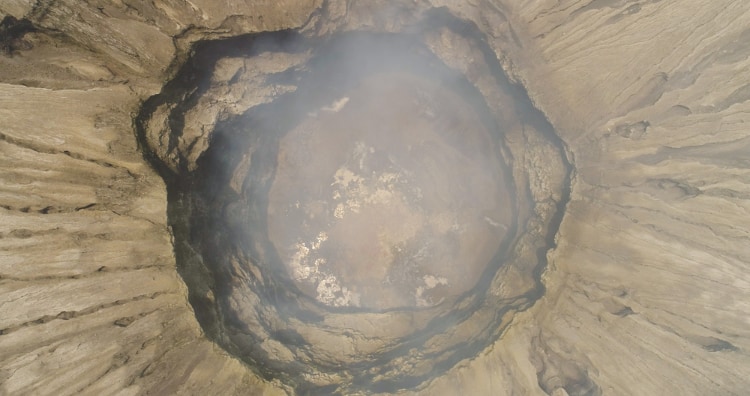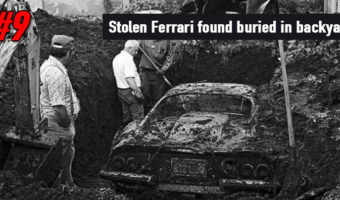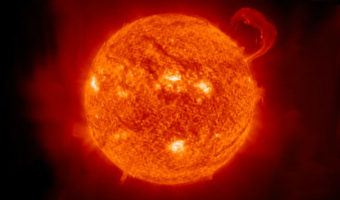Siberian Exploding Crater Mystery: What’s Causing These Explosions?
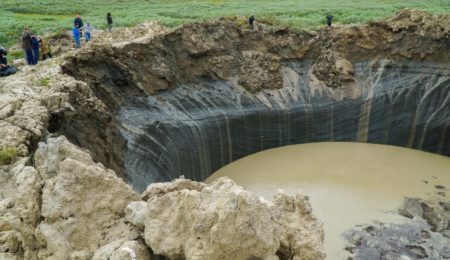
In September 2020, a Russian TV crew spotted a deep crater gouged from the icy landscape of the Siberian tundra. Dirt and blocks of ice were found several feet away from the crater. This is not the first time a crater has been found in the Siberian Arctic. The first crater, “C1,†was discovered by scientists in 2014. Since then, 16 more craters have been identified from natural blasts. Recently, in 2020, a new crater, C17, appeared following an explosion in Siberia’s Yamal Peninsula. So, what’s causing these exploding craters? Let’s find out.
Table of Contents
What are explosion craters?
An explosion crater is a type of crater that develops whenever an explosive event causes the ejection of material from the ground. Generally, shock waves and high-pressure gas cause the formation of bowl-shaped craters. Exploding craters occur due to three processes: deformation of the ground, projection of material from the ground due to an explosion, and projection of material due to impact or stress on the ground surface.
One of the largest exploding craters was witnessed in Germany in 1949 following a huge explosion. The crater was formed in the town of Prüm when an ammunition depot exploded and large parts of the region were ruined. (source)
The exploding craters of Siberia
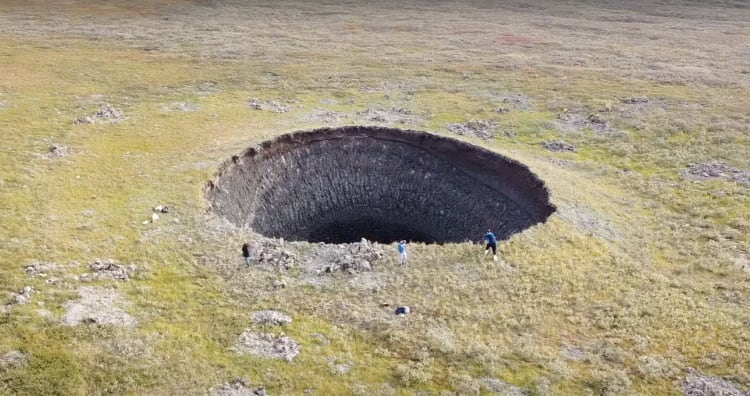
In 2014, a huge crater was discovered by pilots passing over the Yamal Peninsula. The hole was 42 kilometers from the Bovanenkovo gas field and was around 171 feet deep and 66 feet wide. It quickly became famous as the Yamal crater, C1, holding secrets of the mysterious gas explosions from the Earth’s surface.
Since then, researchers have identified more exploding craters across the Yamal peninsula and Gyda peninsulas that are part of the Siberian tundra. The newest crater appeared in the summer of 2020 in an undisclosed location on the Yamal peninsula. According to sources, it is by far the largest crater identified to date. The crater is 102 feet in both depth and diameter. (1, 2)
10 Unusual Natural Wonders that Could Belong in a MovieCause of exploding craters in Siberia
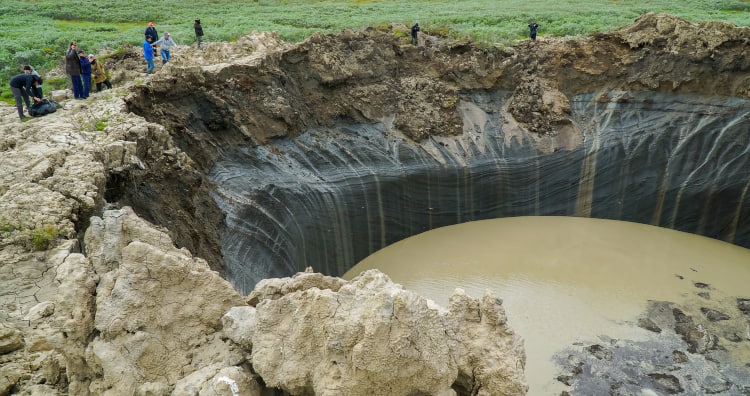
Craters in the Siberian Arctic are likely formed due to a process called “cryovolcanism” that involves eruptions of mud and ice. The process starts with “taliks,” pockets of unfrozen ground surrounded by permafrost (permanently frozen ground). These zones are commonly found under lakes. As the freezing and thawing of permafrost occurs, the talik is exposed to lower temperatures. This causes it to freeze from all sides, pressurizing the trapped gases, usually methane and carbon dioxide. The gaseous pressure continues to build, eventually creating a small bulge or hill at the surface known as a “pingo.” This accentuates the possibility of a blast or exploding crater. Once the pressure breaks through the frozen cap, fragments of ice and dirt are flung out over hundreds of feet. Over time, the crater collapses and fills with water, transforming into a lake identical to the ones across the stretches of the Arctic.
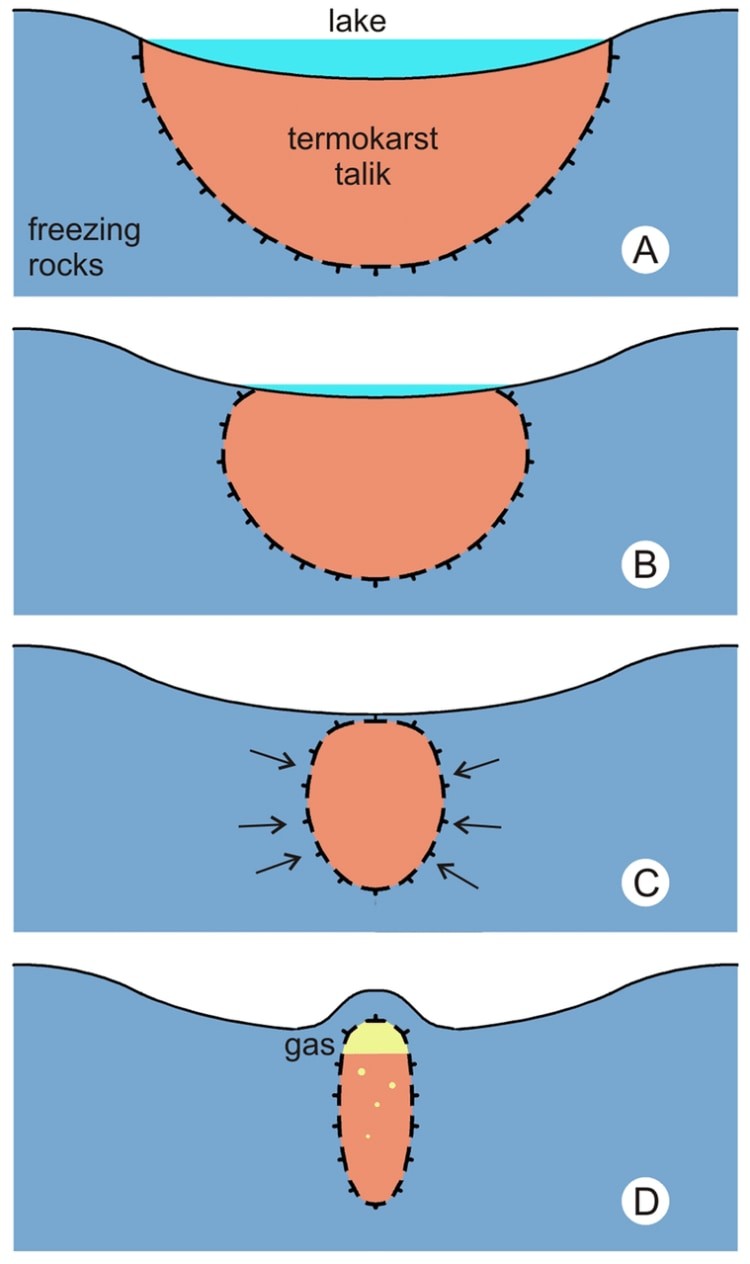
Although pingos are common throughout the Arctic, not all craters are related to the lakes. Taliks can form elsewhere as well, such as within a subterranean zone high in salt. (source)
What does science say about Siberia’s exploding craters?
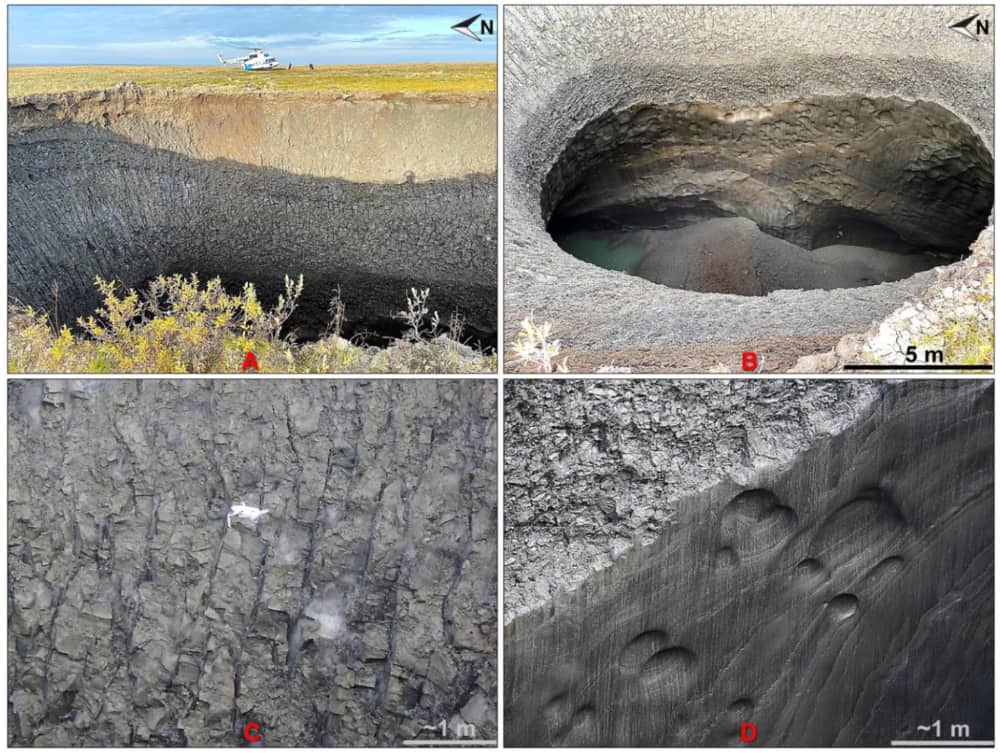
Data from satellite imagery analysis shows that the explosion is preceded by the growth of a mound or pingo. Their growth is driven by a pressure buildup due to accumulations of gas collected in the talik in the shallow permafrost. This pressure may overcome the resistance of the permafrost cap and eventually collapse, pushing the cap upwards by 16 to 19 feet. The force is so powerful that blocks of earth are thrown outwards, leaving a crater. The ejected fragments fall down around the crater, forming a parapet-like ridge.
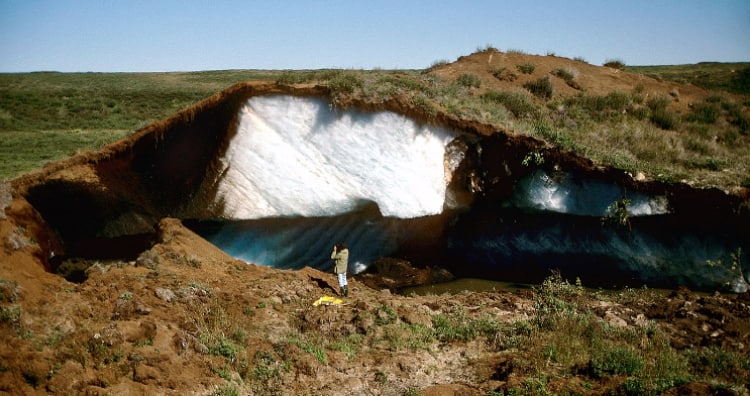
Scientists think that the exploding craters occur from the build-up of methane gas in pockets of thawing permafrost. The gas is released alongside carbon dioxide when microbes feast on organic matter in the talik. One idea is that methane finds its way up to the talik.
Another theory is that carbon dioxide dissolved in the water in the talik starts to bubble out as the water begins to freeze. As freezing continues, the remaining water is unable to hold onto the dissolved gas. (1, 2)
Is climate change the real cause of Siberia’s exploding craters?
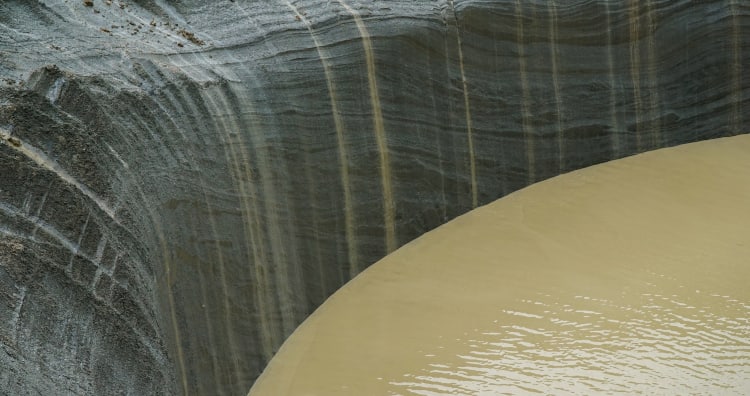
Scientists believe the phenomenon of trapped gases leading to blasts primarily occurs as the climate warms. Climate data for the last several decades show a significant rise in the mean temperatures in the Siberian region. In 2016, the summer was unusually hot, with temperatures reaching as high as 95 °F. A 2017 survey found that over 6,000 small hills dotting the landscape were likely formed by bubbles of methane. Methane is responsible for warming the Arctic two times faster than the global average.
Despite the availability of given data, much remains uncertain. What’s also still unclear is the source of methane, which could be permafrost or deep layers close to the Earth’s surface. Either way, the ice cap has weakened, allowing the gas to escape easily. (1, 2)
The future of the Arctic landscape
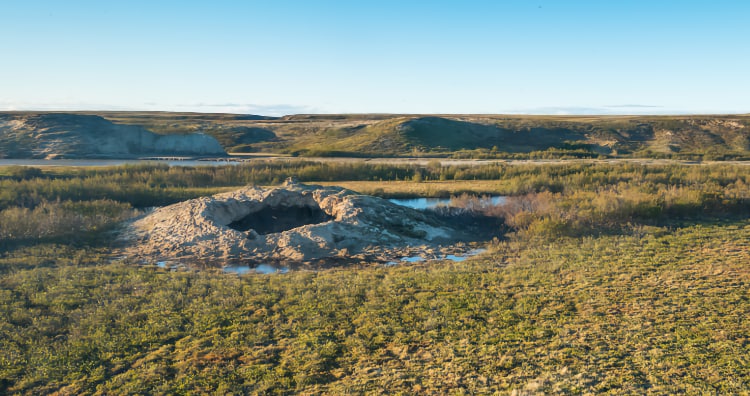
The sudden gas blowouts in Arctic permafrost pose a serious threat to its landscape. Such exploding craters can cause loss of life in the region. As the surface temperatures are warming at twice the rate of average global temperatures, it is causing the frozen ice cap to become more permeable. This is not just transforming the Arctic landscape but also introducing new levels of uncertainty over how the overall phenomenon will impact global warming on the planet. (source)
Will the mystery of Siberia’s craters ever be solved?
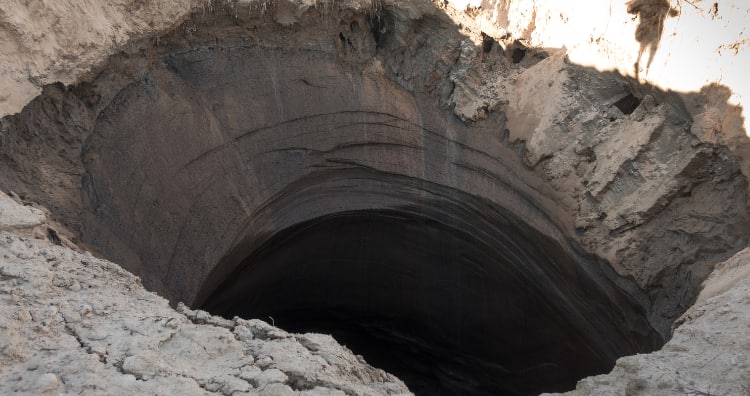
Although scientists have been trying to understand the causes and mechanism of these dangerous gas eruptions through different models, none of them can explain all the known cases. The cause of gas buildup in the permafrost and the conditions in which the phenomenon occurs can differ significantly depending on permafrost characteristics and regional geomorphology. So, the exact reason behind Siberia’s exploding craters will remain a mystery until future research is carried out. Also, explosive gas blowouts will continue to occur for a while in the Arctic peninsula, and we can’t do anything about that. The only thing people can do is to take measures against climate warming at local levels to lower the rate of thawing of the permafrost, which creates a favorable environment for these explosive gas blowouts.
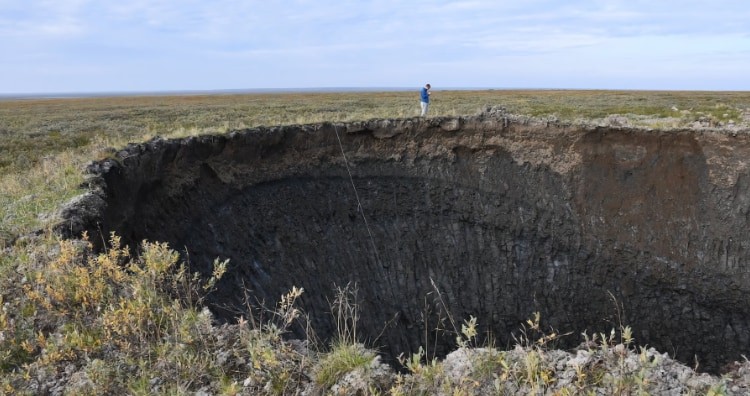
Talking about future research and analysis, researchers will be gearing up to study exploding craters in great detail. Scientists believe that the identification of new exploding craters will be facilitated by close observation of the regions prone to crater formation and the dangerous emission phenomenon using satellite imagery and field surveys. In addition to this, they also plan to perform drilling operations near craters. This will provide new insights and eventually help deal with these dangerous gas blowouts. (1, 2)
10 Wonders that You Thought Were Natural but are Man-made













